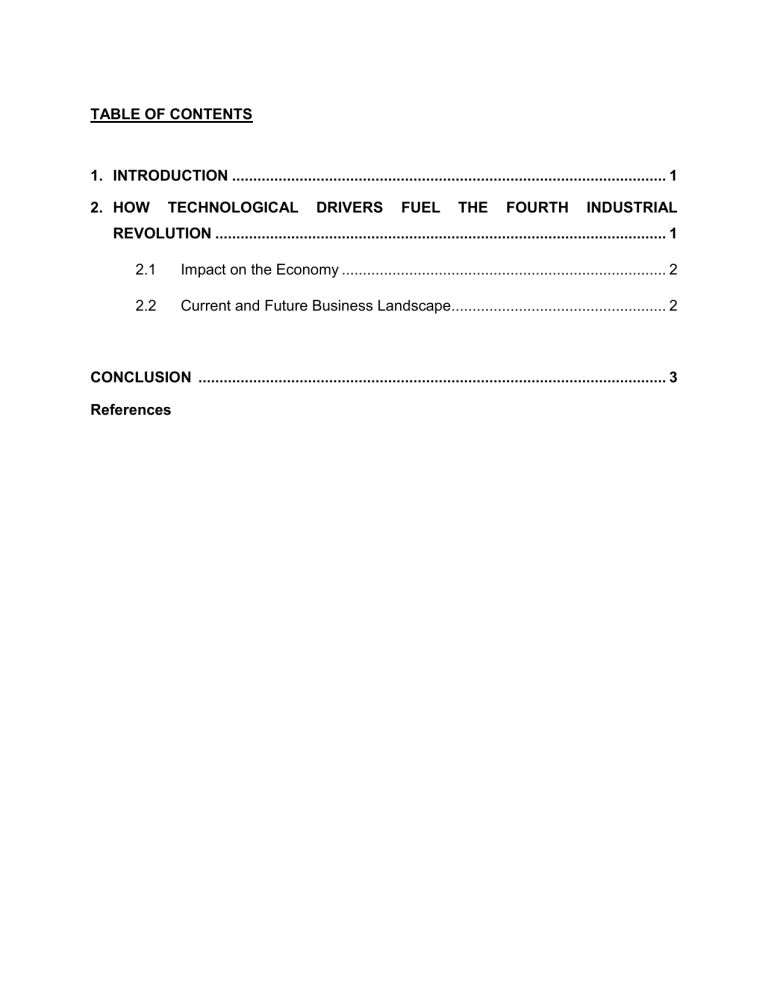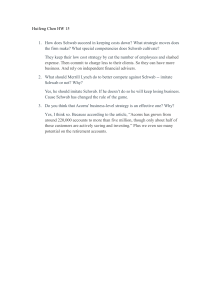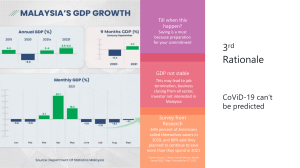
TABLE OF CONTENTS 1. INTRODUCTION ....................................................................................................... 1 2. HOW TECHNOLOGICAL DRIVERS FUEL THE FOURTH INDUSTRIAL REVOLUTION ........................................................................................................... 1 2.1 Impact on the Economy ............................................................................. 2 2.2 Current and Future Business Landscape................................................... 2 CONCLUSION ............................................................................................................... 3 References 1. INTRODUCTION "The Fourth Industrial Revolution" by Klaus Schwab is a classic book that describes the profound changes brought on by new technology. We will go into the technical forces driving this new revolution and analyze how they affect the economy, existing enterprises, and the business environment of the future in this lengthy 1800-word overview. To offer a wide range of viewpoints on this important subject, we will also incorporate information from several outside sources. 2. HOW TECHNOLOGICAL DRIVERS FUEL THE FOURTH INDUSTRIAL REVOLUTION According to Klaus Schwab, the Fourth Industrial Revolution is supported by several technical forces that are all fundamentally changing the world. Artificial Intelligence (AI) and Machine Learning are at the forefront of these. Intricate data analysis, natural language processing, and picture identification are just a few of the traditionally humanonly activities that these technologies have developed to do (Schwab, 2016). Automation results, but so does a revolutionary augmentation of human talents, as AI systems support human intelligence and judgment. Another major force behind this change is the Internet of Things (IoT). An excessive amount of data is produced by the growth of linked devices, which range from smartphones to smart cities. When properly utilized, this data offers chances for boosting operational efficiency, improving customer experiences, and optimizing resource allocation (Schwab, 2016). The Internet of Things is the digital brain of our networked society. Schwab also highlights how biotechnology and genetics are having a transformational effect. The fields of medicine, agriculture, and even environmental sustainability are being transformed by developments in genetic engineering and biotechnology. Precision gene editing is made possible by CRISPR-Cas9 technologies, which might help treat hereditary illnesses and increase crop yields (Schwab, 2016). The distinction between the biological and digital worlds gets fuzzier as a result of this confluence of biology and technology. 1 2.1 Impact on the Economy The global economy is being impacted by the Fourth Industrial Revolution in significant and varied ways. The work situation is one of its most important effects. Traditional employment, especially those requiring regular work, might be disrupted by automation, propelled by AI and robots. While this could result in higher productivity, it also prompts worries about job loss and economic inequality (Schwab, 2016). In order to offer a larger perspective, Brynjolfsson and McAfee (2014) contend that the digital revolution of sectors is a sign of the "Second Machine Age" we are now living in. They stress that although technology opens up new possibilities, it also demands new abilities, creating a skills gap in the job market. This viewpoint emphasizes the criticality of retraining and education to close this gap and adjust to the changing nature of the labor market. Additionally, the World Economic Forum's "The Future of Jobs Report 2020" points out the growing importance of digital skills in the job market and the need for reskilling and upskilling. The report states that digitalization and automation will significantly impact labor markets, affecting both job creation and displacement (World Economic Forum, 2021). Additionally, additional research by Acemoglu and Restrepo (2019) sheds light on the intricate connection between labor and automation. According to their argument, technology both replaces and reinstates labor, and the overall impact on employment relies on a number of variables, such as the technology's nature and how it is incorporated into the workforce. 2.2 Current and Future Business Landscape Within the Fourth Industrial Revolution, current businesses face a landscape rich with opportunities and challenges. Embracing advanced technologies can lead to enhanced productivity and innovation. Businesses that harness data analytics and AI-driven insights 2 can make more informed decisions, optimize supply chains, and deliver personalized customer experiences (Schwab, 2016). Companies must, however, also adapt to changing consumer preferences. The development of digital platforms and e-commerce has put traditional retail strategies under pressure. Businesses must master e-commerce, increase their online presence, and adjust to shifting customer expectations if they want to remain competitive (Schwab, 2016). In the context of the future business environment, Schwab highlights the importance of flexibility and agility. Businesses must be prepared to handle rapidly evolving technologies and fluctuating customer requirements. Consumer confidence and regulatory frameworks will shift as AI and data privacy become increasingly crucial ethical problems (Schwab, 2016). In order to give a balanced vision of automation, McKinsey & Company's paper, "Where Machines Could Replace Humans—and Where They Can't (Yet)," draws from a different perspective. The paper emphasizes that although machines are improving, their capabilities are still constrained. It highlights that automation frequently complements human work rather than completely replacing them and contends that the secret to optimizing value is to combine human and machine capabilities (Manyika, Chui, & Brown, 2016). CONCLUSION In summary, Klaus Schwab's "The Fourth Industrial Revolution" offers a thorough examination of the revolutionary changes sparked by cutting-edge technology. The three key factors that are reshaping the corporate environment and the economy are AI, IoT, and biotechnology. While these technologies present incredible potential, they also present difficult problems in the areas of employment, economics, and ethics. To prosper in this new era, successful organizations must embrace digital change. Governments, corporations, and civil society must work together in the Fourth Industrial Revolution to secure ethical and beneficial consequences for mankind. 3 References Acemoglu, D., & Restrepo, P. (2019). Automation and New Tasks: How Technology Displaces and Reinstates Labor. Journal of Economic Perspectives, 33(2), 3–30. https://doi.org/10.1257/jep.33.2.3 Arntz, M., Gregory, T., & Zierahn, U. (2016). The Risk of Automation for Jobs in OECD Countries. OECD Social, Employment and Migration Working Papers, 189(189). https://doi.org/10.1787/5jlz9h56dvq7-en Arroyo Lazo, M. A. (2018). Schwab, Klaus. The Fourth Industrial Revolution. Ginebra: World Economic Forum, 2016, 172 pp. Economía, 41(81), 194–197. https://doi.org/10.18800/economia.201801.012 Brynjolfsson, E., & McAfee, A. (2015). The second machine age: work, progress, and prosperity in a time of brilliant technologies. Choice Reviews Online, 52(06), 52– 320152–3201. https://doi.org/10.5860/choice.184834 Chui, M., Johnson, B., & Manyika, J. (2009). Distributed Problem-Solving Networks: An Introduction and Overview. SSRN Electronic Journal. https://doi.org/10.2139/ssrn.1411739 Chui, M., Manyika, J., & Mehdi Miremadi. (2016). Where machines could replace humans - and where they can’t (yet). Where Machines Could Replace Humans—and Where They Can’t (Yet). World Economic Forum. (2020, October 20). The future of jobs report 2020. World Economic Forum. https://www.weforum.org/reports/the-future-of-jobs-report-2020


